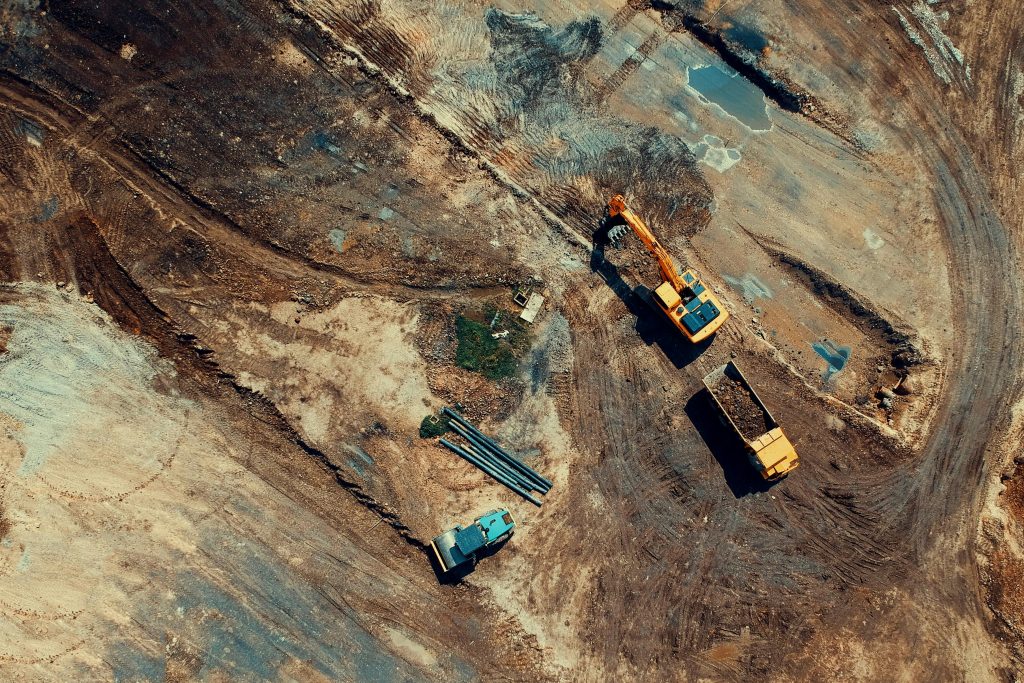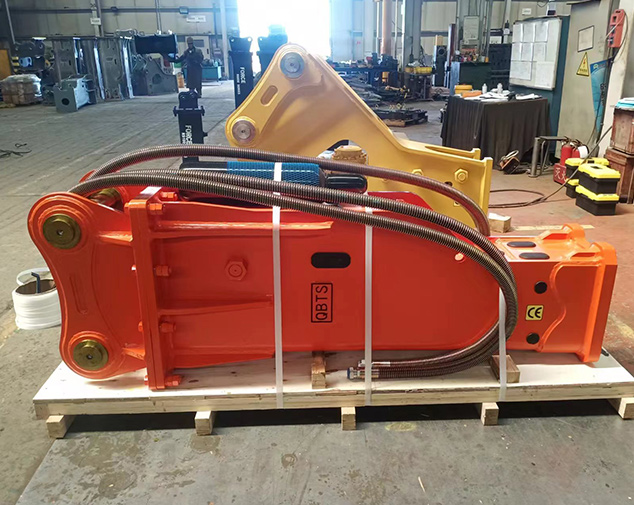How Does a Hydraulic Hammer Function in Heavy-Duty Applications?
The hydraulic hammer is a heavy-duty working tool for construction, demolition and mining. This is the reason the hydraulic hammer’s power and efficiency make it a very important heavyweight application tool.
The Core Components of a Hydraulic Hammer
Hydraulic hammers are essential tools in heavy-duty industries, designed to break through the toughest materials with precision and power. Their efficient operation relies on several core components working in unison.
The Role of the Cylinder in Energy Conversion
The cylinder acts as the heart of a hydraulic hammer which allows the hydraulic energy to be changed into a mechanical force. It is a chamber, which is filled with hydraulic fluid under high pressure. It puts this kinetic energy against a piston to deliver powerful blows. This design transmits the hot to cold current with high energy transfer efficiency together with robustness on the extremes of operating conditions.
The Functionality of the Piston in Force Transmission
The piston role is the important one and it is a force transmission from the cylinder to the tool bit. Because of the stress placed on the piston during operation, it needs to be made from materials capable of handling high amounts of stress, such as hardened steel. This allows it to slide right into the cylinder with enough uniform impact force which becomes very essential to break up dense-dense material.
The Working Mechanism of Hydraulic Hammers
Understanding how hydraulic hammers function can help you appreciate their efficiency and adaptability across various applications.
The Process of Hydraulic Energy Generation
Hydraulic hammers developed hydraulic energy from API systems. An example of this system would be a pump that utilizes a motor to remove hydraulic fluid from a tank and pumps it under pressure. This liquid is then pressurized, after which it’s injected into the hammer cylinder, where it activates the piston and delivers the blow.
How Pressure is Regulated for Optimal Performance
A pressure regulator for the hammer is needed not only to deliver efficient performance but to avoid any harm to the hammer and surroundings as well. It is consequent why we see new control valves on modern hydraulic hammers, wherein the pressure is used based on what the application requires.
These valves not only allow for modifications depending on the task, or material itself but also allow if too high of pressure is present and you can maintain the correct amount of pressure without losing safety or efficiency.
Applications of Hydraulic Hammers in Heavy-Duty Industries
Hydraulic hammers have become indispensable tools across various industries due to their versatility and power.
The Role of Hydraulic Hammers in Mining Operations
In terms of mining, hydraulic hammers are used to shatter large stones so they can be removed from the earth and transported to these materials. Designed to be an impact means on possibly a limited scale, they can be a dependable tool and are popular where farming is concerned and for tunneling or exploration. Moreover, it plays a significant role in reducing manual efforts and improving operational effectiveness.
Application in Quarrying and Rock Breaking
In quarrying operations, the rock cracking work is done with hydraulic hammers. Used for simulation of big boulders; various sizes for processing or serve as feed towards haulage.
The precision in their operations creates very little wastage in terms of raw materials and high productivity levels. In addition to this, conventional explosives are replaced instead of hydraulic hammers, because this kind of hammer has smaller safety and ecological effects.
Kingho has some of the latest and most modern world-class equipment for you if you desire to make your setup more tech-savvy and would like it to be driven by a machine. Kingho possesses over 10 years expertise of in designing and producing mobile intelligent equipment for excavators. It also provides customized products.
Selecting the Right Hydraulic Hammer for Specific Applications
Hydraulic hammers are indispensable tools in various heavy-duty industries. Selecting the right one tailored to specific applications ensures efficiency, longevity, and optimal performance.
Key Factors to Consider When Choosing a Hydraulic Hammer
Choosing a hydraulic hammer involves several considerations. Step One: The hammer needs to match the specs of the excavator or carrier to function properly; hydraulic flow and pressure must fit the specs of the hammer to work. Next: What underthings you could have a captain make use of? Hard rock requires a hammer with far more impact energy than softer materials.
Ideally, another necessary aspect is longevity. For wear resistance hammers which are usually made from high-grade steel alloys have a better wear resistance than are preferred for very harsh environments like mining or demo sites. One should also consider the weight and size of the tool in such a way that it allows operability without compromising safety or efficiency.
Noise reduction features are also worth noting if you are working in urban areas or noise-sensitive environments. Modern hydraulic hammers often incorporate advanced technology to minimize noise levels without sacrificing performance.
Recommendations for Kingho’s Range of Hydraulic Hammers
Kingho hydraulic hammers are equipped with the finest technology and designed for many applications. It comes in side-type, top-type and box-type, which shows the versatility to do any project. Constructed in high-tensile steel, they are surely capable of handling the most challenging conditions.
Be it during mining operations or municipal construction, these products are highly reliable and efficient for use as hammers. After-sale service will be provided by Kingho.
Maintenance Practices to Ensure Optimal Performance
Proper maintenance is essential for maximizing the lifespan and performance of hydraulic hammers. Regular upkeep not only prevents costly downtime but also ensures safety during operation.
Regular Inspection and Servicing of Key Components
Preventive maintenance plays a crucial role in identifying issues at an early stage. Check the key components for wear or damage, such as cylinders, pistons, and seals. Hydraulic fluid levels, anything below the recommended line will generate excess heat and lost efficiency. And, inspect the hoses and connections for leaks that can cause performance issues.
Proper Lubrication Techniques to Minimize Wear
To ensure proper function, lubrication is essential in reducing wear and damage caused by friction on mechanisms. Always use lubricants recommended by the manufacturer that are compatible with your hydraulic system but care must be taken to ensure that soft metals like copper should not be allowed to come in contact with the lubricants. While excess lubricant draws dirt, and debris, too little can add friction and result in overheating.
In dusty applications (quarry or demolition site), the hammer will need more frequent lubrication to maintain its efficiency. In case the hammer is used for dusty applications, like quarry or demolition sites, it might need more frequent lubrication to maintain its optimal performance.
FAQs
Q1: What do you need to take into account when choosing a hydraulic hammer?
A: See if they fit your gear, what they are made of, and how much durability you require if you seek lightweight pads.
Q2: How often should I inspect my hydraulic hammer?
A: Inspections should be carried out frequently, before every use or at a minimum every week during high-use periods.
Q3: Why is hydraulic hammer lubrication so important?
A: Lubrication reduces friction between moving parts, minimizes wear, prevents overheating, and enhances tool life.



